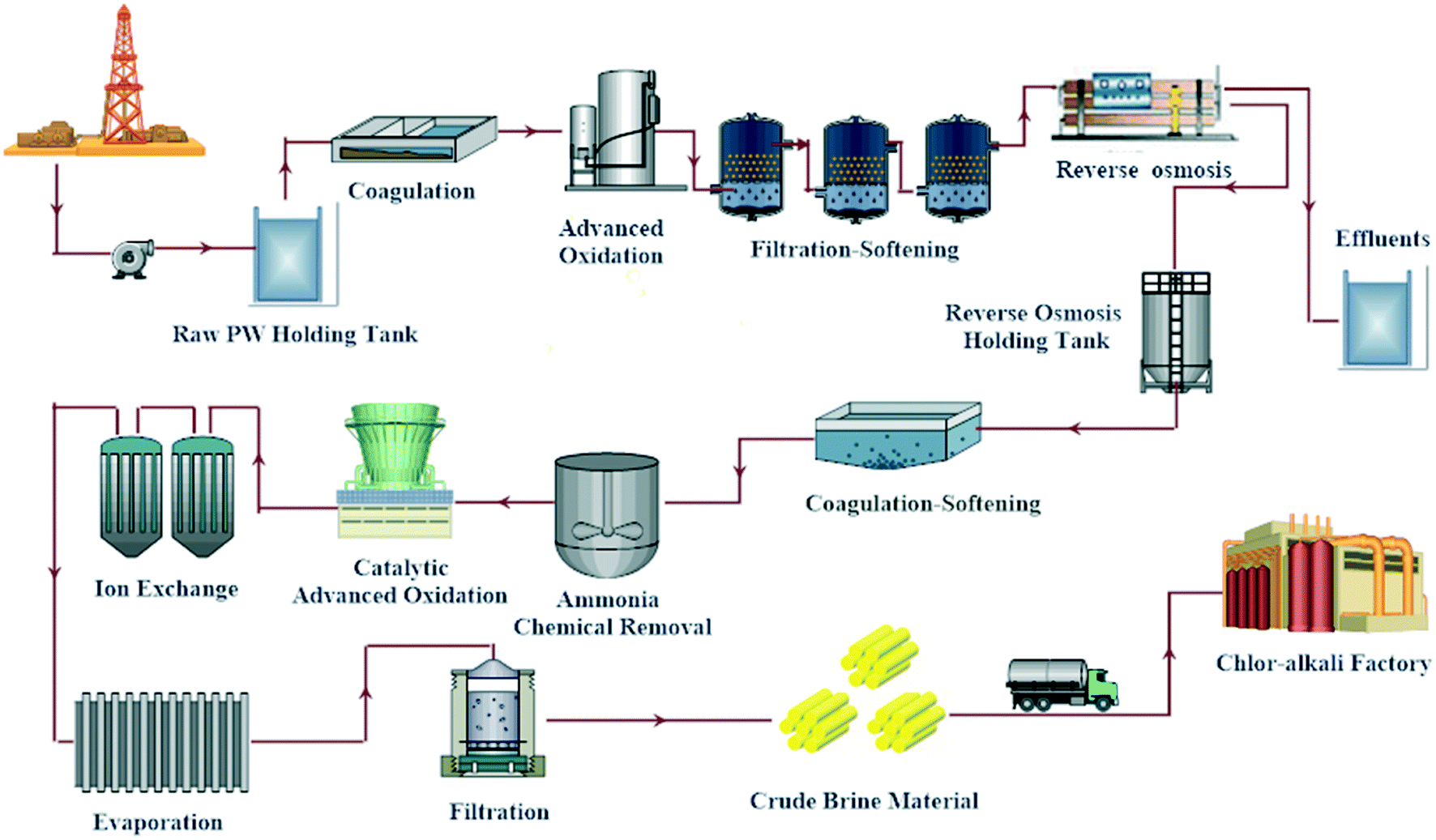

A cost-effective shale gas produced water (PW) treatment plant is an essential facility for safe wastewater management in the shale gas field in the Eastern Sichuan Basin, which is the first commercial shale gas field in China. However, knowledge on PW characteristics and disposal features of this developing shale gas field is limited. This study evaluated the feasibility of pollutant removal from PW in the Eastern Sichuan Basin by a sequential physicochemical process through laboratory and on-site pilot-scale experiments. The results indicated that the CODCr, ammonia nitrogen, total nitrogen, and total phosphorus in the PW are efficiently removed by Fenton–NaClO oxidation, multi-media filtration, and reverse osmosis (RO) processes. A novel recycling route was introduced to rationally dispose the RO concentrate, which was recycled as a raw brine material for a chlor-alkali enterprise through a physicochemical advanced treatment process. A laboratory-scale co-treatment of PW with domestic wastewater was also conducted. Salinity fluctuation, chemical pre-treatment toxicity, resistance, and resilience of the bioreactor after fluctuations may heavily influence the planning, design, and construction of a PW treatment plant, although a coupled chemical–biological process for treating PW is a potential cost-effective management technique. Overall, the sequential physicochemical process that includes RO is a feasible process for the cost-effective treatment of PW from the shale gas field in the Eastern Sichuan Basin. The recycling of the RO concentrate as a raw brine material for the chlor-alkali enterprise is a potential and novel resource recycling mode. The detailed results derived from this study will be considered as a reference for developing the first full-scale centralized shale gas PW treatment plant in this field.

Flow diagram of the laboratory-scale treatment and recycling of PW by a sequential physicochemical process.